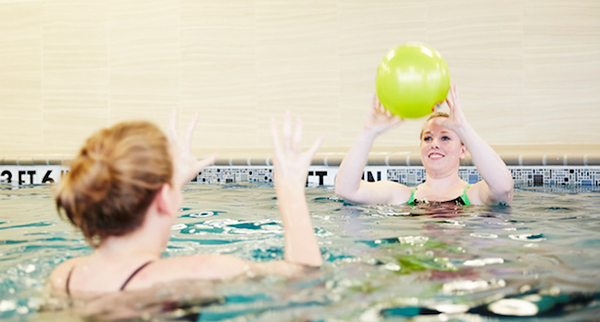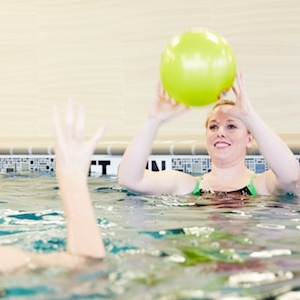Turned an ankle while playing basketball? Tear your rotator cuff trying to serve up an ace? Caused a stress fracture in your foot from running too much? Exercise, even when recovering from an injury, is an important part of returning to your full strength. However, you may not realize there could be safe ways for you to exercise. One type of exercise that can be very beneficial for those recovering from a sports injury is aquatic physical therapy.
WHAT IS AQUATIC THERAPY?
Aquatic therapy is physical therapy that takes place in a warm pool rather than on dry land. The strain on your bones, muscles, and joints is reduced because of the water's buoyancy. This means you can perform exercises safely, under the direction of an aquatic therapist, and keep the strain off of any injuries.

BENEFITS OF AQUATIC THERAPY
Because water is denser than air, it provides excellent resistance without the full weight of your body during an exercise. The weight of water also exerts light pressure on the skin, which boosts blood circulation and flow. Better blood flow and increased circulation encourage healing and reduce inflammation.
Another benefit of aquatic therapy is that exercising underwater is much safer when you’re injured than exercising on land. For example, if you have a torn meniscus, you may fear falling down while attempting to rehabilitate your knee in a gym. Underwater, the water’s resistance helps you maintain your balance and minimizes the potential for further injury.
WHAT TO EXPECT IN THE WATER
As you might expect, you'll wear a swimsuit and aqua shoes (if desired) rather than workout gear and sneakers during an aquatic therapy session. To participate, you don’t have to be a strong swimmer. Aquatic therapy can be done in shallow water or using flotation devices. Your aquatic therapist will help you safely enter the water. If you're using crutches or can't put weight on your legs to get into the water, a lift chair is available. Depending on the injury or condition you’re being treated for, therapies may take place in waist-, chest-, or neck-deep water.
Some aquatic therapies involve walking, running, or swimming against turbulence created by a jet. These therapies increase endurance and strength. Other in-pool therapies involve targeted repetitive exercises, such as lunges, ball lifts, dumbbell curls, bike pedals, and scissor kicks, which are designed to build up strength and promote healing of a specific injury. Your therapist will decide what is best for you and your individual treatment plan.
If you're interested in learning more about how to stay active even when you have an injury, download our free eBook. Or schedule an appointment with our aquatic therapy team at the Spring, TX location.







